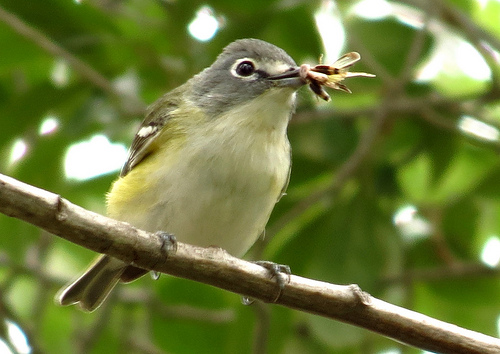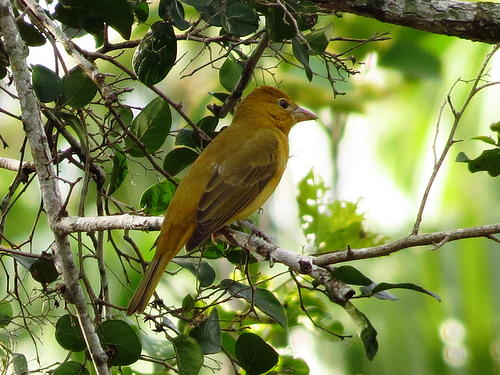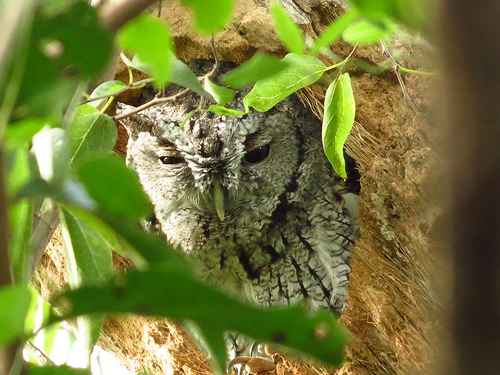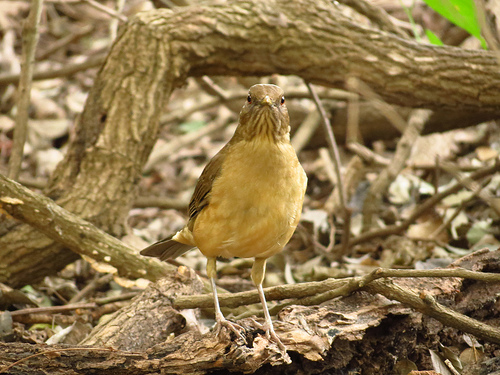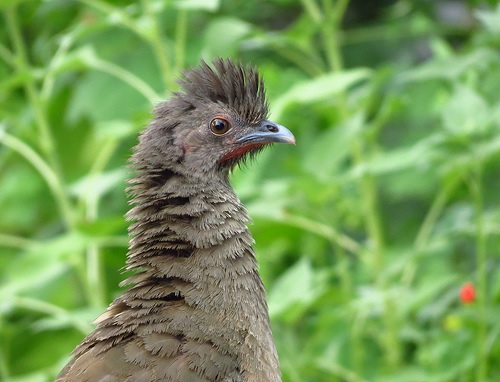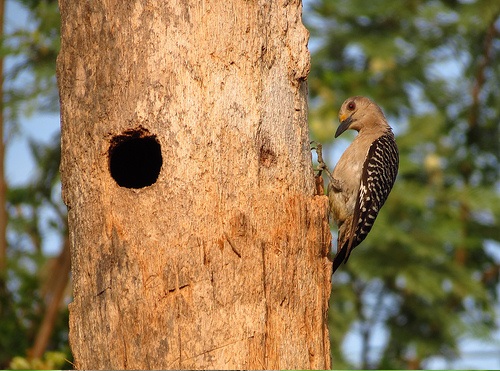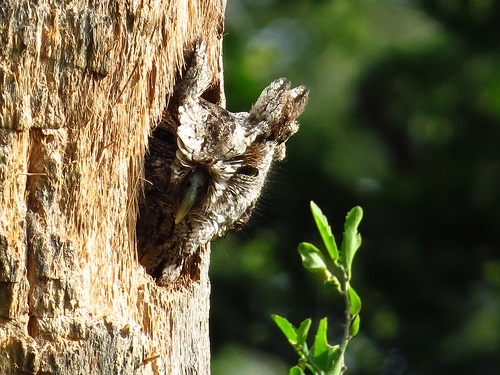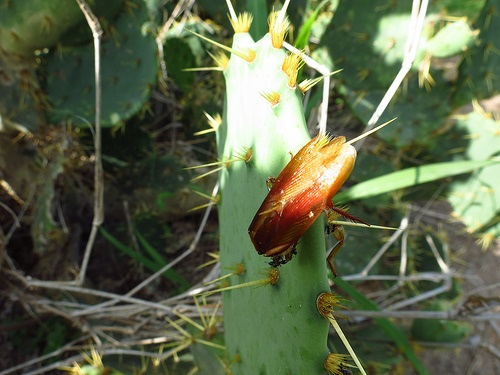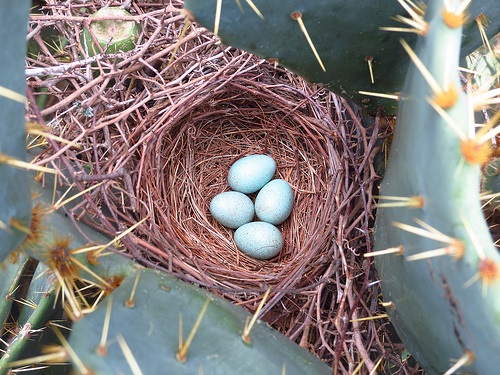Although it is only early August, migration is just around the corner. Many songbirds are currently undergoing zugenruhe, which is migratory restlessness. Many of the birds from the Canadian Boreal forest, northern prairies, northern mountains, and many other northern ecosystems will be passing through south Texas over the next few months. Birds migrate to follow their favored food sources.
One very ambitious juvenile Ruby-throated Hummingbird was seen at Quinta Mazatlan today! Late August is when these beautiful birds begin to show up in their regular numbers for the southbound migration, and this species will be quite numerous in the Lower Rio Grande Valley come September. Get those hummingbird feeders ready with a solution of 1 part sugar to 4 parts water, and be sure to keep them clean with fresh nectar. The hummingbirds will thank you!

Here a juvenile Ruby-throated Hummingbird takes a break from catching gnats in the air.

An impressively cute Common Pauraque rests on our forest floor while sporting those stout yet growing tail feathers!
Water often becomes scarce this time of year. The mid-day heat and blustery air wicks the land of standing water. Drought-resistant plants find these conditions tolerable, while many non-native plants struggle to survive on their own. Despite the intense heat and dry substrate various trees and low-growing plants are flowering and going to seed, with much more of this plant reproduction to come. With flowers blooming and seeds being produced, many birds will find food plentiful through the fall season.

A Plain Chachalaca drinks from one of our birdbaths.

“Francis”, our resident javelina, is quite shy and will often wait until the coast is clear to enjoy birdseed that spills to the ground.

Here is a Swainson’s Hawk seen overhead. This raptor species is known for its two-toned undersides and lengthy, pointed wings.

The secretive Olive Sparrow searches for seeds and insects on the forest floor. Their colors and markings are subtle yet so beautiful! The Olive Sparrow get their name from the color on their backside, as seen from this photo.
Here is the eBird list from today’s Songbird Stroll.
Black-bellied Whistling-Duck 2
Plain Chachalaca 16
Gray Hawk 1
Swainson’s Hawk 2
Black-necked Stilt 1 Flew from the Ebony Grove pond!
Killdeer 1 Ebony Grove pond visitor
Rock Pigeon (Feral Pigeon) 1
Inca Dove 18
White-tipped Dove 2
White-winged Dove 25
Mourning Dove 2
Yellow-billed Cuckoo 1
Eastern Screech-Owl 1
Common Nighthawk 1
Common Pauraque 1
Chimney Swift 16
Ruby-throated Hummingbird 1 Juvenile
hummingbird sp. 1
Golden-fronted Woodpecker 3
Ladder-backed Woodpecker 1
Green Parakeet 8
Great Kiskadee 3
Couch’s Kingbird 1
White-eyed Vireo 1
Green Jay 2
Purple Martin 30
Cave Swallow 2
Black-crested Titmouse 2
Carolina Wren 2
Clay-colored Thrush 8
Curve-billed Thrasher 3
Northern Mockingbird 1
European Starling 2
Olive Sparrow 2
Great-tailed Grackle 3
Orchard Oriole 1 Male
Hooded Oriole 1 Flyover
Lesser Goldfinch 2
House Sparrow 30
Good birding. Hope to see you at the upcoming Songbird Strolls!
Erik Bruhnke
















 It was another sunny and warm summer morning at Quinta Mazatlan, and with lots of bird activity. Orchard Orioles are starting to migrate back through as they make their journey south. One of the most exciting sights of the morning was this young Eastern Screech-Owl. After looking at us sleepily a few moments, it suddenly cracked it eyes open and gave us this wonderful look. This is the first juvenile screech-owl I’ve seen in the park this summer.
It was another sunny and warm summer morning at Quinta Mazatlan, and with lots of bird activity. Orchard Orioles are starting to migrate back through as they make their journey south. One of the most exciting sights of the morning was this young Eastern Screech-Owl. After looking at us sleepily a few moments, it suddenly cracked it eyes open and gave us this wonderful look. This is the first juvenile screech-owl I’ve seen in the park this summer.

 The mystery of what species the nestling in the Hooded Oriole nest was solved today. The dark feathers and big bill both indicate its a cowbird, and most likely Bronzed. Hooded Orioles get parasitized by cowbirds very commonly, and it has affected their population in the Lower Rio Grande Valley.
The mystery of what species the nestling in the Hooded Oriole nest was solved today. The dark feathers and big bill both indicate its a cowbird, and most likely Bronzed. Hooded Orioles get parasitized by cowbirds very commonly, and it has affected their population in the Lower Rio Grande Valley.



